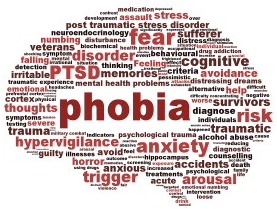When you look at phobias and any underlying condition there is no doubt that the term “fight or flight” will very quickly the rear its head. So, what is “fight or flight” and what role does it play in the lives of phobia sufferers?
Fight or flight is an inbuilt reaction
Whether or not the term fight or flight is new to you, this is a natural reaction which is present in all mammals and forms of life. As the term suggests, this reaction either prompts the person/animal to fight a particular situation or get away from danger as quickly as possible. To all intents and purposes we are not able to control the fight or flight reaction but we can to a certain extent dictated the outcome and what we actually do.
Autonomic nervous system
This is the primary mechanism which controls the fight or flight reaction which occurs subconsciously and affects an array of action such as heartbeat, digestion, respiratory rate, pupillary response and arousal. When you see details of fight or flight written down it is fairly easy to relate to exactly what it is and what it does. Have you ever felt fear with your heart pounding, your palms sweating and your head seemingly about to explode?
How does fight or flight help?
The basic function of the fight or flight reaction is to review a potentially dangerous/uncomfortable situation in a split second and decide whether to fight through it or basically flee. Your body has an inbuilt mechanism which it uses to decide the best course of action for you prompting events such as increased blood flow to the muscles, increased blood pressure, heart rate and blood sugars (to give you more energy and more physical power). In simple terms you are being prepped to either flee the situation as fast as possible or fight it – perhaps another way to describe it is an adrenaline rush.
It is also interesting to see that this particular function speeds up the blood clotting capabilities of the body in the event of injury. This relates perfectly to the situations we hear where someone is in a situation of physical activity, tension and aggression but when injuries occur they only feel the injury once the “adrenaline rush” has receded.
Fight or flight and phobias
A number of experts would describe phobias in simple terms as an issue with the basic wiring of your brain which affects the cognitive process. That is why many phobia sufferers will take on cognitive therapy to assist with “rewiring” their brains. This is the way in which we re-educate ourselves and our bodies to react differently to situations where there is a perceived danger/threat which is nowhere near the level which our body is indicating to us.
This is fight or flight in its most basic form but obviously there may be other underlying issues associated with many phobias. However, tackling your fight or flight “rewiring” can go a long way to reducing the impact on your everyday life.
Conclusion
The fight or flight phenomenon has been around since the human race first began offering a basic reaction to an array of potentially dangerous/uncomfortable situations. Any one individual’s fight or flight reaction will vary as we often see many people pushing themselves to the limit in for example challenging and potentially dangerous sporting activities. The human brain is very complicated and sometimes we need to reset it to “factory settings” to avoid overreactions in the case of phobias and other psychological issues.






